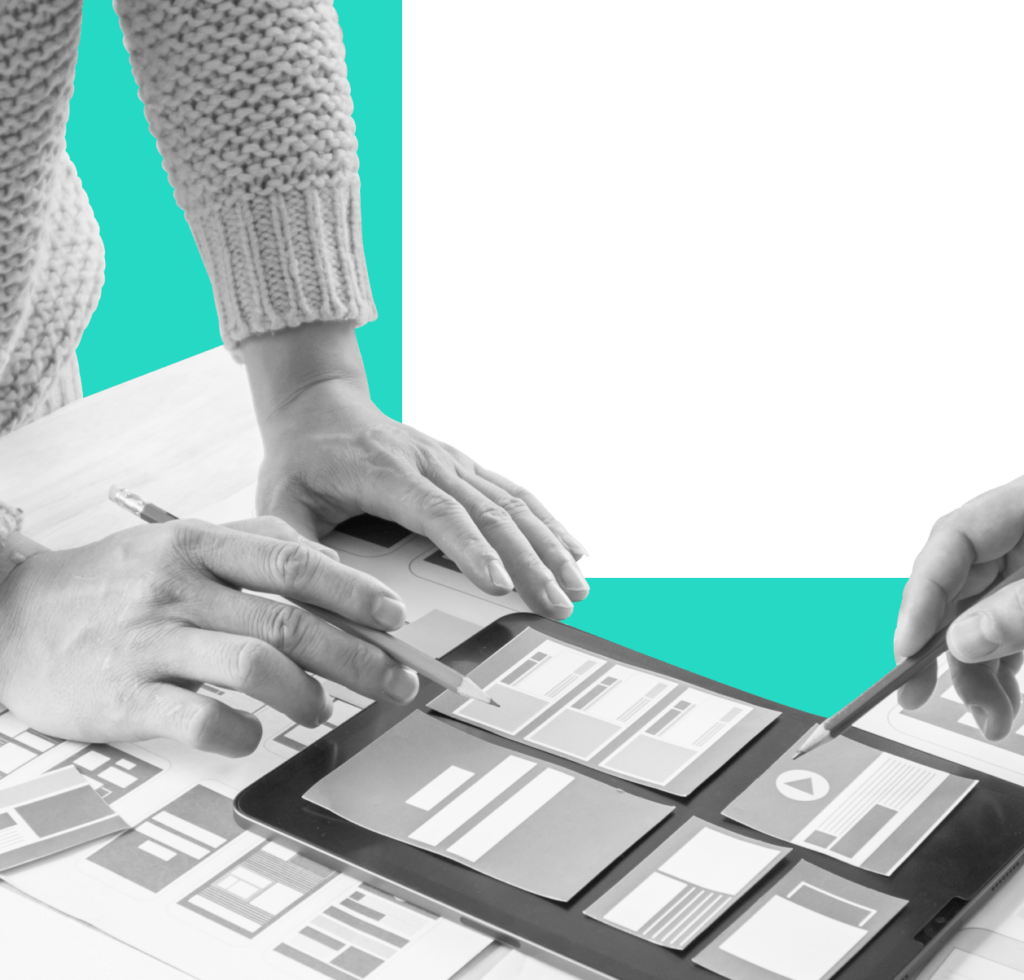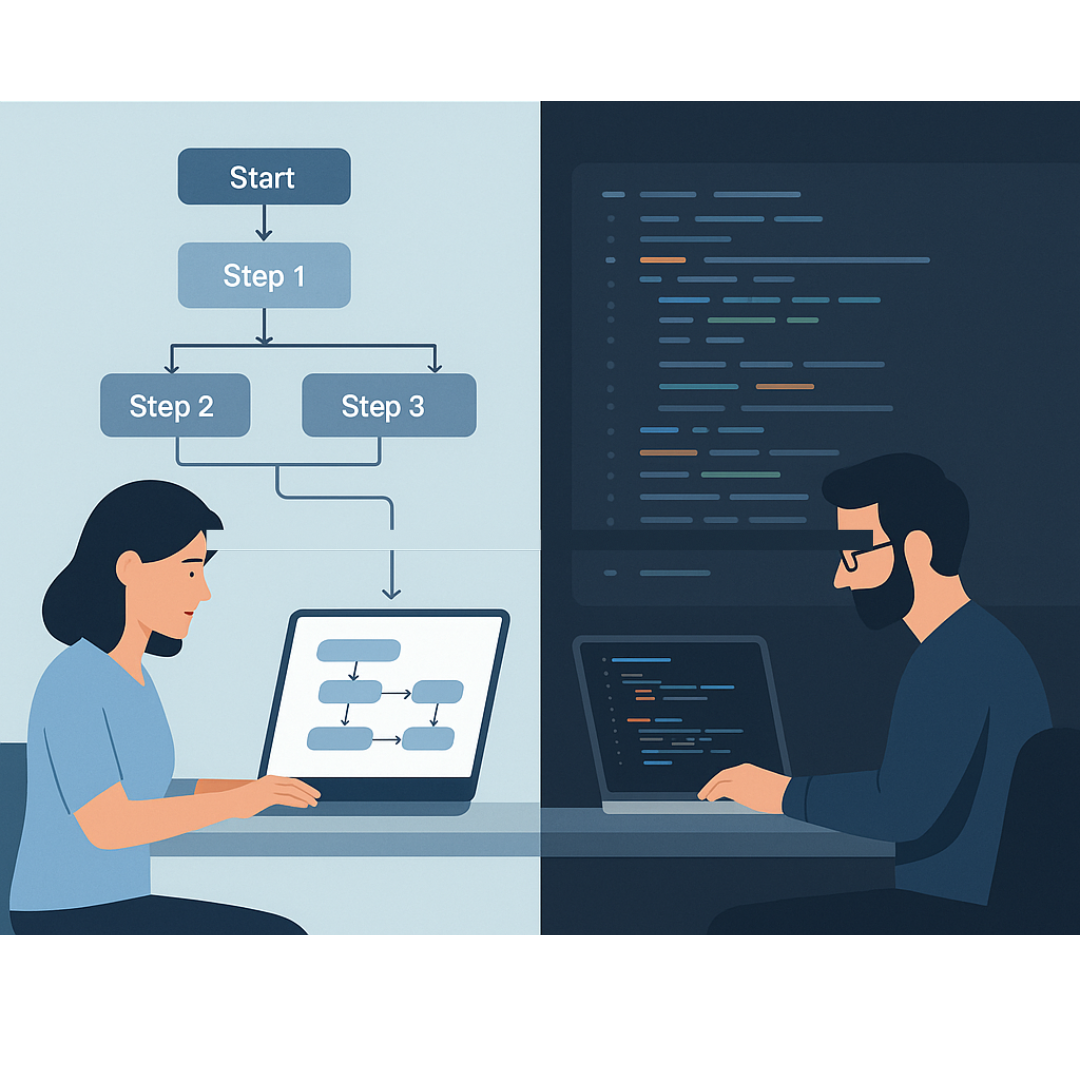Defining and communicating our design process is critical for project alignment with our team and with clients. It establishes a shared understanding of a project’s scope, priorities, and milestones. This clarity fosters transparency and trust with clients and helps to manage timelines and deliverables.
The importance of defining and communicating a design process
We’ve witnessed success when we proactively define and communicate our process, leading to smoother collaboration, reduced misunderstandings, and more successful outcomes. On the contrary, we’ve seen projects falter when the design process is ambiguous or poorly communicated. This can result in misaligned expectations, delays, and a loss of trust. We’ve had clients come to us with the frustration of having invested time and money with other agencies but not gotten the results they expected. We’ve been able to gain their trust by clearly defining our process and delivering as promised. A well-defined and communicated design process is crucial for setting clear expectations, aligning goals, and creating efficient workflows.
Clear expectations for project stages and scope
Transparency
Each stage of the design process is clearly outlined so that everyone understands what to expect and when.
Scope definition
Everyone understands what is included, ensuring the project remains manageable and focused.
Alignment of goals and prioritizations
Goal setting
Project goals and objectives are clearly defined, so that everyone has a shared understanding of what success looks like
Prioritization
Alignment on features and elements that are most critical to project success. Typically, we lead an alignment workshop and use engaging exercises like the MoSCoW prioritization (Must have, Should have, Could have, Won’t have).
Structure for efficient workflows and milestones
Structured approach
A defined process provides structure to streamline workflows and improve efficiency.
Milestone tracking
Clearly communicated milestones and deliverables keep the project on track and ensure that everyone is aware of progress and upcoming tasks.
Our design process
We believe in tailoring our process to fit the specific needs and objectives of each project. There’s no one-size-fits-all approach here. Instead, we carefully analyze the requirements and goals of every project to create an agile, customized strategy that ensures the best possible outcomes.
We essentially focus on four main stages: UX research, UX design, product strategy, and development. While we like to lead with UX research and design, product strategy and development are involved from the beginning, so we work in parallel.
UX research
Helps us grasp user behavior, needs, and challenges, uncovering insights that inform actionable recommendations to guide the design and strategy. The following are phases for UX research:
Research plan & objectives
A research plan is a strategic document outlining objectives, methodologies, a timeline, and resources to ensure systematic, focused, and efficient insight gathering.
- Directs focus, reducing wasted efforts
- Guides informed decisions with evidence
- Aligns teams and clarifies goals
Research methods
Selecting the most appropriate and effective methodologies to answer specific research questions or to achieve the objectives of a study within the constraints of time, budget, and available resources.
- Ensures precise, relevant insights into user needs
- Yields insights directly useful for design and strategy
- Early problem identification minimizes costly fixes
Interviews
A qualitative research method involving structured conversations with users to understand their experiences, needs, and challenges with a product or service to provide insights for design improvements.
- Uncovers deep insights
- Contextual understanding
- Builds user empathy
- Identify specific usability issues
Findings and insights
Systematically synthesizing data gathered during UX research to uncover patterns in user behavior, preferences, and challenges. Reporting insights involves crafting a narrative that conveys these key observations and actionable recommendations clearly.
- Reveals user needs, challenges, and opportunities
- Guides product development
- Informs design decisions
UX design
Create visuals and interactions based on user needs that are intuitive, functional, and provide an enjoyable user experience. The following are phases for UX design:
Information architecture
Structuring complex information (labeling, navigation, hierarchies, and taxonomy) to make content and features understandable and accessible.
- Defines navigation and captures scope
- Shows page organization and hierarchy
- Workflows that capture a sequence of actions a user takes to fulfill goals
Wireframes
A blueprint of the user interface that shows content, hierarchy, and functionality for each unique page.
- Layout of content and interactions that will appear in the prototype
- Insight into key components that will become part of the design system
- Provides clarity on scope and functionality
- Team consensus before investing time on a prototype
Prototype
An interactive representation of a product’s user interface and experience before it goes into development.
- A tangible product to evaluate and refine
- Brand alignment and consistency
- Gain valuable user insights
- A valuable reference for developers
Design system
A customized collection of reusable design components and styles.
- Reusable UI elements and styles
- Consistent user experience
- Improved collaboration and handoff between teams
- Empowers designing and scaling a product efficiently
Product strategy
Strategy that secures user adoption by meeting their needs while reaching business goals, reducing risks, and ensuring quality. The following are phases for product strategy:
Product vision
A product vision outlines a product’s purpose and future direction.
- What is the future state of the product?
- How are we going to help our users?
- How do we define success for this product?
Jobs to be done
Jobs-to-be-Done Theory provides a framework for defining, categorizing, capturing, and organizing all of a user’s needs.
- Simple “needs” statements
- Helps prioritize features
- Helps define the categories of features (epics)
Epics & user stories
User stories are short requirements or requests written from the perspective of an end user. Epics are larger bodies of work that can be broken down into a number of smaller stories.
- Ability to manage sprints and align around features and tasks
- Manage the backlog of items, current sprint’s priorities, with visibility into the status of those tasks, including bugs
- Ability to manage story points and manage development velocity
Product roadmap
A product roadmap is a shared source of truth that outlines the vision, direction, priorities, and progress of a product over time.
- Shared plan of action
- Short- and long-term goals
- Ability to visualize main deliverables and milestones
Development
Creates a clear development roadmap based upon designs and specifications, focusing on seamless integrations, system behavior, and infrastructure. The following are phases for development:
Requirements
Outlines what the product aims to achieve and how it interacts with users and other systems. It outlines what the product should do from the user’s point of view and its technical needs, focusing on security and legal standards.
- Prioritization and sequence of actions: A clear inventory of requirements enables effective prioritization
- Addressing non-functional requirements early, including security and compliance, diminishes legal and operational risks
System architecture
The structural design of the product is defined. It describes the component architecture, selecting specific technologies, frameworks, and 3rd party services used to build the product (the technology stack), and outlines how data is stored, accessed, and managed across the system.
- Provides a unified blueprint, aligning everyone with the system’s structure and objectives
- Helps in avoiding delays and inefficiencies that could arise from making these decisions later on
- Serves as a common language among stakeholders, making for faster understanding and implementation when things change
Behaviors & integrations
Focuses on the product’s dynamic aspects and its interactions with external systems. It covers third-party integrations and APIs the software will connect with, detailing any complex behaviors such as authentication flows, scheduled tasks (crontabs), and other processes that require detailed explanation to ensure smooth operation and interoperability.
- Ensures a clear understanding of product behaviors and external interactions
- Facilitates seamless system integration and interoperability
- Highlights security considerations for safe data exchange
Infrastructure & deployment
Defines the necessary infrastructure for product support, encompassing server specifications, cloud services, etc. It also explains the deployment strategy, articulates procedures for rolling out updates, and ensures the implementation of continuous delivery and integration practices, with consideration for QA/testability.
- Defines the capacity and scalability of the infrastructure to meet future demands
- Details deployment strategies for streamlined and efficient product updates
- Ensures infrastructure robustness for reliable product performance
- Ensures that the product infrastructure supports thorough testing and quality assurance processes to maintain high standards of reliability and performance
A well-defined design process serves as the backbone for delivering exceptional results. It facilitates clear expectations, aligned goals, and efficient workflows. By focusing on four main stages: UX research, UX design, product strategy, and development, we create an agile, customized strategy based on the requirements and goals of every project.



